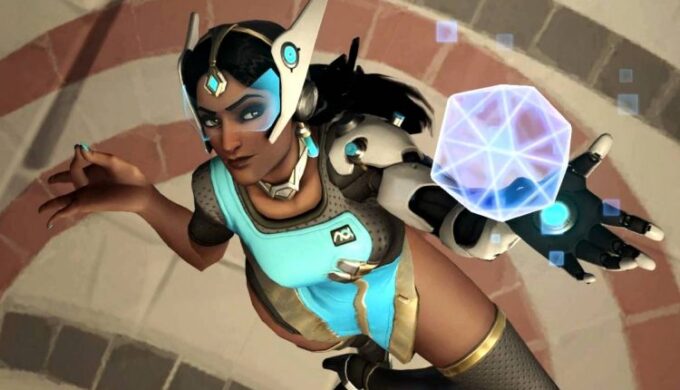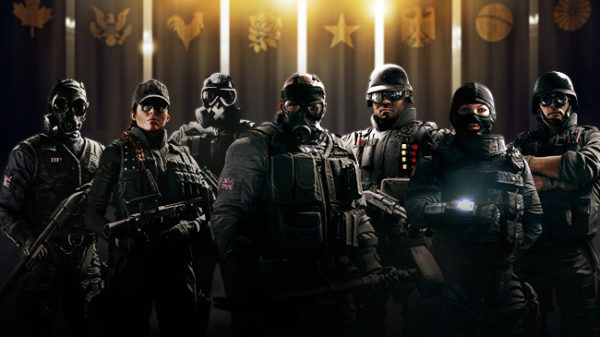Autism and pop culture are currently in a strange relationship. We laugh at characters like Sheldon Cooper from Big Bang Theory and we get into debates about whether Suzanne “Crazy Eyes” Warren from Orange is the New Black is on the spectrum. Netflix exclusive Atypical comes out in August and those interested in the science and psychology behind neurological disorders will more than likely debate the show’s possible strengths and insensitivities, similar to 1989’s Rain Man, which is now considered a movie best to avoid with its apparent insensitivities toward savant syndrome.
Autistic Spectrum Disorder has been thrust into the media spotlight for a while now and many people on the spectrum cannot tell you whether that is a good thing or not. For every Maurice Moss from the IT Crowd, who was written well and someone the autistic community embraced (despite the show never saying if he was on the spectrum or not), there is a Sugar Motta from Glee who was written to the point of being borderline offensive and made to make the neurotypical (non-autistic folk) feel better about themselves.
Usually, when TV and films fail us, we can rely on video games to help push the boundaries and creative envelope on just how it feels to live with a disorder. There was Perception, the survival horror game where you play the visually impaired Cassie roaming around a dark mansion, avoiding monsters and so on. Amy is, again, a survival horror title where you are guiding the titular autistic 8 year old around a zombie apocalypse. Both concepts were fantastic on paper, however there was one small flaw; the games were both poorly received by gamers and critics.
It’s always unfortunate when a conceptually sound video game gets a bad score, but it’s even more heart-breaking considering that these games were in theory trying to help focus the spotlight on something a little different; the challenges of a disability. Though it should be stressed that these games were panned more for their quality rather than who you were playing as, and while you could forgive them for being indie games developed on a tight budget, the AAA industry are also lacking that much needed diversity. That’s not to say that there are not autistic characters in AAA gaming, but my research into this article uncovered a big surprise along the way.
First off, a disclaimer; I am indeed on the spectrum, having been diagnosed in 1999. Compared to other people on the spectrum I have it fairly easy, but physical/verbal communication, memory retention and depending on my mood, crowds of people elude me. On a good day, I can just about manage describing my wants or needs, pop down the local pub for a night with friends or travel to London for a gig and maybe remember a very small list of tasks (no more than four items). On a bad day, I am distant, cancel plans at the drop of a hat, won’t remember what you told me 20 seconds ago and can’t even walk into a shop without a sense of dread looming over me. I do have my coping strategies; my iPod is always on me and sunglasses are a saviour in situations where I may have to use verbal communication and stop people from noticing my eyes darting all over the room. I may look like a bit of a dickhead wearing sunglasses indoors in the dead of night in the middle of winter, but they do serve as an excellent “protective layer.”
During my research for this article, I was surprised to learn of two things: the first was that characters on the spectrum were mostly side-characters, with the exception of Amy. The other apparent fact I learned was a good chunk of those characters were female. It’s interesting to note this as it has become somewhat common knowledge in the autistic community that diagnosing autism in women is more trying compared to men. Surveys dating back from the early 1940’s have always seen a clear ratio between men and women with the disorder; for every one woman that has been diagnosed, there are at least four men that have also been diagnosed. Hans Asperger, the very man who helped bring autism into public awareness, felt that no woman could ever be diagnosed with the disorder, until further research clearly proved him wrong and he had to revise his previous studies.

There are still many debates into the how’s and why’s, but overall the jury is still out as to why it would appear men are more susceptible to the disorder than women. Of course, like with all things scientific and psychological there are theories; some popular theories suggest that women are simply better at hiding or masking their symptoms or that autism is seen by neuroscientists as a product of the “extreme male brain”.
When you consider all the resources and research available to us, it is fascinating how video game writers seemed to have written characters such as Patricia Tannis from Borderlands 2 or Symmetra Vaswani from Overwatch as their ideal representation of people on the spectrum. That’s not to say that there haven’t been male autistic characters; just recently we had Josh Sauchak from Watch Dogs 2. For the most part, Ubisoft wrote him fairly well; confident in his skills, yet feels the burden of his talents quickly, he needs constant approval that he is doing the right thing from the rest of Dedsec and is awkward with communication. Despite the common stereotype of “autistic, therefore good with computer code”, Josh is -for the most part- better written than half the TV and film characters I have witnessed in media.
However, Josh still suffers with one glaring problem – he fits too neatly into the comfort zone of representation that many various media outlets have now written what seems to be in stone: awkward communication skills, a jittery disposition and a lack of spatial awareness. You could argue that the irony to all of this is that writers do not understand that the autistic spectrum is just that – a spectrum of terms and conditions that make anyone with the disorder unique in their own way.
If video games are to help successfully build autistic awareness, what can be done? Should there be a preferred gender based on available research? Should there be defining characteristics so neurotypical players can spot the signs for themselves, without needing another character to practically spell it out for them?
In short, the answers to these three questions are, yes, more can be done to continue awareness, no there shouldn’t be a preferred gender and finally, rather than defining exaggerated conditions, there should just be characters, and the current stereotype of autistic characters in media needs to die out. The sad truth can, however, coexist with a sprinkle of optimism – no one will ever be able to write true definition of an autistic character. To write a “model autistic” character with a checklist of symptoms is looking at the bigger picture in the wrong light. Writers shouldn’t be catering to one type of character, they need to create a plethora of characters.
The reason why we play video games is because we want to play something we are not in reality, it doesn’t necessarily matter who either. We want to be put into the shoes of someone who is relatable working against the odds, whether it is fighting mythical beasts or the demons in their head. At its essence, that conflict is what makes a good video game. However, it is characters in general -their struggles, the hurdles they need to overcome, the way they communicate with other characters- that is hugely important to the overall tapestry, that contributes to the video game from being good to memorable.
With more varied, robust storylines and character building, rather than focusing on the same symptoms of awkward communication and body language, writers have a better chance of creating characters that the autistic community can champion and use to help come to terms with their own struggles with day to day life. The science and research is already there, videogames and overall technological advancements can and have helped the autistic community with interaction, attention span and reducing repetitive behaviour.
If video games can help those on the spectrum help themselves by becoming better at social interaction and mimicking the behaviour of the protagonists they enjoy playing, then the gaming community could be considered true pioneers for reaching out and being able to grasp the understanding of disorders that exist in our realities. Providing autistics don’t do what I did with San Andreas and call everyone “homie” for a solid six weeks. I have patient friends, but they wanted to hit me so much for that.
We certainly have a long way to go before writers in all forms of media will be able to understand the true trials and tribulations of those on the spectrum, and we may have to look at the indie darlings of the gaming community to help bridge that gap, but there could be something we as a community can do, the current climate is simply not acceptable enough. Perhaps we should be asking writers to actually talk to people on the spectrum, see what it is we want to see in video games rather than make guesswork of what it is that makes us tick.
Many people on the spectrum are uncomfortable talking about their problems for fear of ridicule and if I can be blunt for one moment, the current codes and conventions TV and film are broadcasting are currently not helping that plight. With the right help, the right creative writing and the right amount of pressure of awareness, they will be able to overcome and accept their flaws and with that, so will neurotypicals. People with autism are just that – people.





